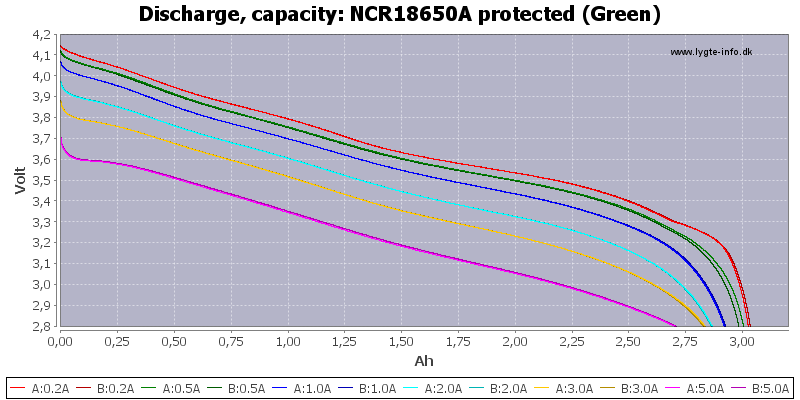Dsinned
Well-known member
http://www.windingroad.com/articles/reviews/driven-2012-toyota-rav4-ev/
According to the above link, the 2012 RAV4 EV's "actual" maximum storage capacity is 50kWh. I think this may be true.
Here's why . . .
In all of TOYOTA's literature, the Tesla battery spec is always said to be "41.8kWh". But, this number is always also said to be the "USABLE" amount of the battery's total capacity, not necessarily the "actual" total capacity. The consumer's perception of the RAV4 EV is that the usable and actual battery capacities are the same, but I don't think so.
It would be prudent for the longevity of the battery to hold some amount of the battery's SOC in reserve. I am more familiar with the Chevrolet VOLT and this is the case for that car's battery. GM rates the total and the usable differently. The latter on my 2012 VOLT is 10.4kWh, but the actual total is 16kWh. GM only "allows" the VOLT to use between ~20% and ~90%, or ~70% of total stored energy. Unlike the RAV4 EV, there is only ONE charging mode in the VOLT. Of course, a recharge can be interrupted before completion if the owner so chooses, but most VOLTs are typically "FULLY" recharged to the so-called maximum "useable" capacity of the battery, i.e. no more than 10.4kWh. Of the 5.6kWh extra UNUSEABLE capacity, some is kept in reserve at the bottom and some potential capacity at the top that is never actually used.
In CS (charge sustaining) mode, the VOLT switches on a 55kW electrical generator via a 1.4L gasoline engine. This provides the means to maintain a sufficient charge on the battery so the driver can literally "extend" a VOLT's range several hundred miles on a full tank of gasoline. Except for rare situations, the gas generator is not used to directly power the drivetrain. The drivetrain is ALWAYS directly powered by the traction motor via energy drawn from the battery. The function of the generator is really just to keep the battery from dropping below its minimum allowable 20% SOC.
TOYOTA probably does somewhat the same thing, especially on the bottom end, except it "allows" the RAV4 EV owner to have more "selectable" control of the high end SOC.
Of course, I am not certain of how Toyota (Tesla) manages the RAV4's battery's SOC, but I suspect the "usable" amount of its total capacity is about 65 to 70% based on "normal" charging, and maybe as much as 85 to 90% based on "extended" charging.
So, when TOYOTA states that a normal charge restores the electrical energy in the battery to ~80%, I think that really means no more than its actual TOTAL storage capacity of 70%. And when they say an extended charge restores the battery to 100%, I think that really means no more than its actual TOTAL capacity of 90%.
Comments?
According to the above link, the 2012 RAV4 EV's "actual" maximum storage capacity is 50kWh. I think this may be true.
Here's why . . .
In all of TOYOTA's literature, the Tesla battery spec is always said to be "41.8kWh". But, this number is always also said to be the "USABLE" amount of the battery's total capacity, not necessarily the "actual" total capacity. The consumer's perception of the RAV4 EV is that the usable and actual battery capacities are the same, but I don't think so.
It would be prudent for the longevity of the battery to hold some amount of the battery's SOC in reserve. I am more familiar with the Chevrolet VOLT and this is the case for that car's battery. GM rates the total and the usable differently. The latter on my 2012 VOLT is 10.4kWh, but the actual total is 16kWh. GM only "allows" the VOLT to use between ~20% and ~90%, or ~70% of total stored energy. Unlike the RAV4 EV, there is only ONE charging mode in the VOLT. Of course, a recharge can be interrupted before completion if the owner so chooses, but most VOLTs are typically "FULLY" recharged to the so-called maximum "useable" capacity of the battery, i.e. no more than 10.4kWh. Of the 5.6kWh extra UNUSEABLE capacity, some is kept in reserve at the bottom and some potential capacity at the top that is never actually used.
In CS (charge sustaining) mode, the VOLT switches on a 55kW electrical generator via a 1.4L gasoline engine. This provides the means to maintain a sufficient charge on the battery so the driver can literally "extend" a VOLT's range several hundred miles on a full tank of gasoline. Except for rare situations, the gas generator is not used to directly power the drivetrain. The drivetrain is ALWAYS directly powered by the traction motor via energy drawn from the battery. The function of the generator is really just to keep the battery from dropping below its minimum allowable 20% SOC.
TOYOTA probably does somewhat the same thing, especially on the bottom end, except it "allows" the RAV4 EV owner to have more "selectable" control of the high end SOC.
Of course, I am not certain of how Toyota (Tesla) manages the RAV4's battery's SOC, but I suspect the "usable" amount of its total capacity is about 65 to 70% based on "normal" charging, and maybe as much as 85 to 90% based on "extended" charging.
So, when TOYOTA states that a normal charge restores the electrical energy in the battery to ~80%, I think that really means no more than its actual TOTAL storage capacity of 70%. And when they say an extended charge restores the battery to 100%, I think that really means no more than its actual TOTAL capacity of 90%.
Comments?

